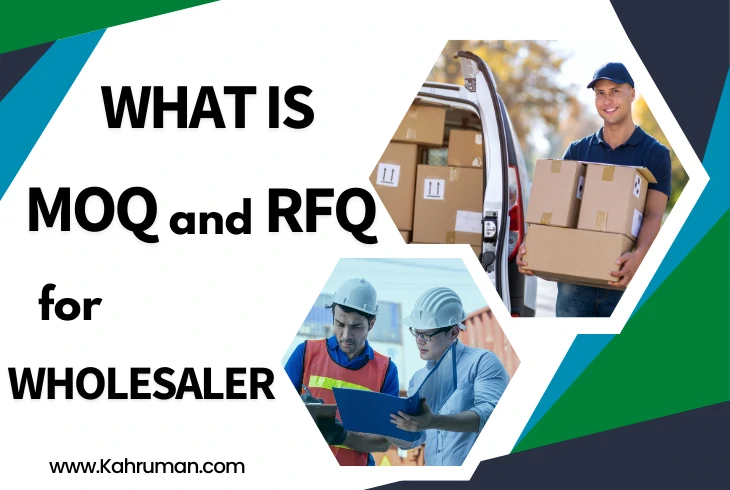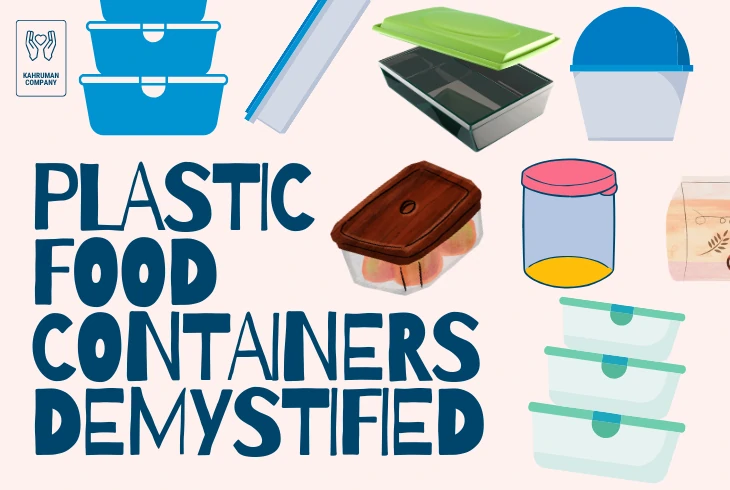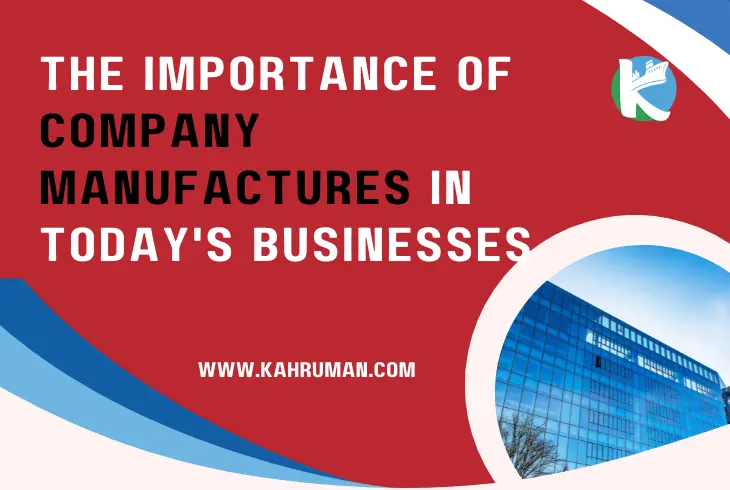Wholesale packaging is an essential aspect of the retail industry. Packaging is crucial in covering products during transportation and storage and influences a customer's purchasing decision. When considering wholesale packaging, several practical considerations must be taken into account, including cost, and efficiency. Wholesalers and traders ask about that to save their products from suppliers.
Types of Wholesale Packaging: An Overview of Common Materials and Styles
Wholesale packaging can be made from various materials, including paper, plastic, metal, and glass. Wholesale packaging is essential for businesses that ship or store products in large quantities.
We show an overview of some common types of wholesale packaging materials and styles:
Corrugated boxes: These are made from a fluted inner layer between two flat layers of paperboard, providing strength and duration. Corrugated boxes are ideal for shipping heavier items and can be customized with logos or graphics.
Poly bags: These are lightweight, durable, and waterproof, making them ideal for storing and shipping items that need protection from moisture or dust. Poly bags come in various sizes and styles, including zip lock and slider bags.
Bubble wrap: This material is made of plastic with tiny air-filled bubbles, providing cushioning for fragile items during shipping.
Shrink wrap: This plastic film shrinks when heat is applied, creating a tight seal around the item being packaged. Shrink wrap is ideal for packaging items with irregular shapes or bundling multiple items together.
Foam inserts: These are custom-made foam pieces that fit snugly around the packaged product, providing extra cushioning and protection. Foam inserts are commonly used in electronic packaging or to ship fragile items such as glassware.
Labels and tags are essential for identifying and tracking products during shipping and storage. Labels and tags can be customized with company logos, product information, and barcodes.
Pallets: These are wooden, plastic, or metal platforms for storing and shipping large quantities of products. Pallets make it easier to move products using forklifts or pallet jacks, and they can be stacked to maximize storage space.
Tubes: These are cylindrical containers made of cardboard, plastic, or metal. Lines are ideal for packaging items such as posters, blueprints, or documents that need protection from bending or creasing.
Envelopes are thin, flat packaging materials made of paper or plastic, commonly used for shipping documents or flat items such as photos or cards. Envelopes come in various sizes and can be padded or reinforced for added protection.
Choosing the Right Size and Shape: Factors to Consider for Your Packaging
Choosing the right size and shape for packaging is crucial. Several factors are to consider, including the type of product, the intended use of the packaging, and the target audience.
For example, suppose you are packaging supplies or equipment. In that case, you may need a sturdy and durable box or container that can withstand rough handling during transportation. On the other hand, if you are packaging a gift or cosmetic product, opt for a more elegant and visually appealing packaging option, such as a Kraft box or a jewelry box.
Prices can also play a role in selecting the right packaging size and shape. Some retailers may offer discounts for bulk purchases or have a selection of stock packaging options at lower prices. Wholesalers provide a more complete choice of packaging options at a lower cost.
Consider the intended use of the packaging as well. If you are packaging bakery items, you may need specialized boxes or mailers to keep the products fresh during shipping. Suppose you are packaging bottles or other fragile items. In that case, you may need custom packaging options with added protection to prevent breakage.
Lastly, consider the source of the packaging. Look for leading packaging suppliers with a reputation for quality and service. Some of the largest and most reliable packaging suppliers may offer a wide range of packaging options, including accessories and display items, and may have an online presence for convenient ordering.
Here are some factors to consider when choosing the size and shape of your packaging:
Product dimensions: The size and shape of your packaging should be based on the dimensions of your product. Choosing to package that fits the product snugly is essential to prevent it from shifting during shipping, which could lead to damage.
Weight: The weight of your product is another essential factor to consider when choosing the size and shape of your packaging. It would help if you decided on the packaging that can safely support the weight of your product without breaking or tearing.
Shipping method: The shipping method you choose will also impact the size and shape of your packaging. For example, if you're shipping your product via air freight, you may need to choose lightweight and compact packaging to keep shipping costs down.
Storage space: The size and shape of your packaging can also impact the storage space required for your product. Stackable or collapsible packaging can help storage space and reduce storage costs.
Branding: Your packaging can also be used to promote your brand. Choosing visually appealing packaging that incorporates your company logo and brand colors can help increase brand recognition and customer loyalty.
Environmental impact: It's essential to consider the environmental impact of your packaging. Packaging made from sustainable materials and easily recycled help reduce your company's carbon footprint and promote eco-friendliness.
When choosing the size and shape of your packaging, it's essential to consider the specific needs of your product, shipping and storage requirements, branding goals, and environmental impact. By selecting the proper packaging, you can ensure your product is well-protected, visually appealing, and environmentally friendly.
Practical Considerations for Wholesale Packaging: Durability, Cost, and Efficiency
Wholesale packaging is essential for businesses that rely on packing and shipping their products in bulk. It involves several practical thoughts, including duration, cost, and efficiency. When selecting packaging for their products, businesses must balance these factors to ensure that their products are protected during transit while being cost-effective and efficient.
One of the most important considerations when choosing wholesale packaging is durability. The packaging must withstand the rigors of shipping and handling without breaking or becoming damaged. This is especially important for fragile products like glass bottles or delicate items like soap. Businesses must also consider the weight of their products and choose packaging that is sturdy enough to support the weight without tearing or breaking.
Another critical attention when selecting wholesale packaging is cost. Businesses must balance the cost of the packaging with the value of the products inside. This means that while they want to minimize the cost of the packaging, they want to ensure that it provides adequate protection for their products. In some cases, businesses may save money by purchasing packaging in bulk or by selecting packaging that is on sale or clearance.
Efficiency is an essential factor to consider when selecting wholesale packaging. Businesses want to ensure that their packaging is easy to use and keeps their packing and shipping processes up. This means selecting packaging that is easy to assemble, fill, and seal and that can be stored and transported efficiently.
There are some options available for businesses regarding wholesale packaging, including pouches, boxes, bags, and wraps. Many companies use tissue paper, ribbons, or stickers to add a unique touch to their packaging and promote their brand. Some industries, like the beauty and cannabis industries, have specific packaging requirements that businesses must adhere to, such as using child-resistant lids for cannabis products or eyelash boxes for beauty products.
Businesses must consider their wholesale packaging options to ensure that they are selecting durable, cost-effective, and efficient packaging. By exploring their options and browsing available stocks, businesses can find suitable packaging for their products and ensure that they deliver their products to customers in the best possible condition.
When choosing wholesale packaging, it's important to consider practical factors such as durability, cost, and efficiency. These are some things to keep in mind:
- Durability.
- Cost.
- Efficiency.
- Storage.
- Durability.
By considering these practical factors when choosing wholesale packaging, you can select durable, cost-effective, and efficient packaging. This make ensure that your products are well-protected during shipping and handling while reducing costs and improving sustainability.
Regulations and Standards: Staying Compliant with shipping Packaging Requirements
When shipping products, it's vital to ensure that your packaging meets all necessary regulations and standards. This helps to ensure that your products are transported and that you comply with legal requirements. These are some critical rules and standards to be aware of:
International Safe Transit Association (ISTA): ISTA provides testing and certification for shipping containers, packaging materials, and transportation systems. Their standards are widely used to ensure that packaging can withstand the rigors of transport.
Code of Federal Regulations (CFR): The CFR provides guidance on packaging and labeling requirements for various products. These regulations cover everything from hazardous materials to food products.
International Maritime Dangerous Goods Code (IMDG): The IMDG provides guidance on safely transporting hazardous materials by sea. If your products contain dangerous materials, you must comply with IMDG requirements.
International Air Transport Association (IATA): The IATA guides the safe transportation of goods by air. This includes regulations on packaging and labeling for hazardous materials and guidelines on the maximum size and weight of packages.
United Nations (UN) Packaging Codes: The UN provides standardized codes for packaging materials used to transport dangerous goods. These codes guide the type of packaging used for different types of hazardous materials.
Sustainable Packaging Coalition (SPC): guides eco-friendly packaging materials and best practices. This can help you choose sustainable packaging options that meet environmental standards.
By staying up-to-date on these regulations and standards, you can ensure that your packaging meets all requirements. This can help to ensure that your products are transported in the safe way to avoid any legal issues related to non-compliance.
Innovations in Wholesale Packaging: New Technologies and Trends
As technology continues to evolve, innovations in wholesale packaging are emerging. These are some of the latest trends and technologies to watch for in 2023 and beyond:
- Smart Packaging.
- Sustainable Packaging.
- 3D Printing.
- Automation.
- Intelligent Packaging.
Augmented Reality (AR): AR technology can create interactive packaging designs that engage customers and provide information about the product.
By staying up-to-date on these new technologies and trends in wholesale packaging, businesses can improve the efficiency, continuity, and overall customer experience of their packaging and shipping operations.
Maximizing Your Investment: Strategies for Cost-Effective Wholesale Packaging
Wholesale packaging is an essential expense for any business that ships products. There are strategies you can use to help maximize your investment and reduce costs without sacrificing quality. These are some cost-effective methods for wholesale packaging in 2023:
- Consider Bulk Purchases
- Optimize Packaging Design
- Review Shipping and Handling Processes
- Partner with Suppliers
- Automate Packaging Operations
- Opt for Eco-Friendly Materials
Packaging Sustainability: Reducing Your Natural Impact with Eco-Friendly Options
As consumers become more conscious of their natural impact, businesses are also looking for ways to reduce their carbon footprint and be more eco-friendly. One way to do this is by implementing sustainable packaging options. These are some eco-friendly packaging options that can help reduce your business's environmental impact:
Biodegradable Packaging: Biodegradable materials, such as paper or plant-based plastics, can break down naturally in the environment and are a great alternative to traditional packaging materials that decompose for years.
Recyclable Packaging: Materials that we can recycle them, such as cardboard, paper, and certain plastics, are ideal for eco-friendly packaging options.
Compostable Packaging: Compostable materials, such as bioplastics made from plant-based materials like corn or potato starch, break down in compost conditions and can be an ideal solution for food packaging.
Reusable Packaging: Reusable packaging, such as tote bags, jars, or containers, can be used multiple times and help reduce waste.
Eco-Friendly Packaging Fillers: Eco-friendly packaging fillers, such as recycled paper, cardboard.
Minimalist Packaging: Using minimalist packaging, like wrapping products with recycled paper or using simple cardboard boxes, can reduce waste and materials used.
Implementing sustainable packaging options reduces your business's carbon footprint and can be a marketing advantage for your business. Environmentally conscious customers may be more likely to choose your products over your competitors who use traditional packaging methods.
Innovative Wholesale Packaging that Enhances Product Safety and Quality
Innovative wholesale packaging can enhance the appearance of products and improve their safety and quality. These are some examples of innovative packaging solutions that can help improve product safety and quality:
- Tamper-Proof Packaging.
- Temperature-Controlled Packaging.
- Child-Resistant Packaging.
- Anti-Static Packaging.
- Oxygen-Reducing Packaging.
RFID-Enabled Packaging: RFID-enabled packaging includes an embedded radio frequency ID (RFID) tag that can be used to track and monitor products during shipping and storage. This type of packaging can help improve supply chain efficiency and reduce the risk of lost or damaged products.
Transportation and Logistics: Ensuring Safe Delivery of Your Products
Transportation and logistics are essential for ensuring products' safe and timely delivery from one location to another. Whether you are a business owner or a single, choosing the proper transportation and logistics provider is critical to ensuring that your products arrive at their destination in good condition and on time.
Some transportation and logistics options are available, depending on your specific needs and requirements. Some standard transportation methods include air, sea, and land transportation. Air shipment is the fastest option and is ideal for transporting time-sensitive or shipping sea is a cost-effective way to transport large quantities of goods.
In contrast, land shipment is best for transporting products within the same region or country.
Choosing a reliable logistics provider is essential. Look for a provider with a good track record of delivering products on time and in good condition. They should have the necessary licenses and papers to transport your products.
In addition to transportation and logistics, proper packaging is crucial for ensuring your products' safe delivery. Ensure your products are packaged and labeled to prevent damage during shipment.











